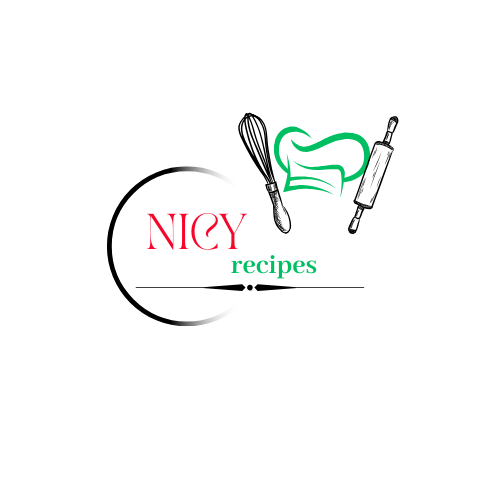If you’ve ever wondered how professional bakers achieve cakes that stay moist and fluffy for days, the secret might surprise you: glycerine. This versatile ingredient isn’t just for skincare; it’s a baker’s dream for retaining moisture and enhancing texture. In this blog post, we’ll dive into why glycerine is a game-changer and guide you through an easy recipe to try at home.
A Brief History of Glycerine in Baking
Glycerine has been used in baking for decades, especially in commercial bakeries looking to extend shelf life. Originally derived from animal fats and later synthesized from plant oils, glycerine found its way into cakes and desserts as bakers discovered its moisture-retaining properties. Today, it is a common ingredient in both professional and home baking, celebrated for its ability to keep cakes soft and delicious without altering their taste. Whether you’re making a simple sponge or an elaborate layer cake, glycerine can elevate your baking game.
Glycerine in Baking: A Game-Changer for Cake Moisture and Texture
Adding glycerine to your cake batter works wonders. This humectant locks in moisture, ensuring your cake stays soft and tender for longer. Unlike other methods of moistening cakes, glycerine also enhances texture without altering the flavor. Here are a few reasons why glycerine is a must-have for bakers:
- Keeps Cakes Fresh: Glycerine prevents cakes from drying out, making them perfect for occasions when you need to bake ahead.
- Improves Texture: It creates a smoother, more elastic batter, resulting in a finer crumb structure.
- Preserves Sweetness: Glycerine enhances the natural sweetness of your cake without adding extra sugar.
Ready to unlock the magic of glycerine in baking? Follow this easy glycerine cake recipe for a moist, fluffy, and absolutely delicious treat.
Easy Glycerine Cake Recipe for Beginners – Step-by-Step Guide

Ingredients:
- 2 1/2 cups (315g) all-purpose flour
- 1 cup (200g) granulated sugar
- 1/2 cup (120ml) vegetable oil
- 3 large eggs
- 1 cup (240ml) whole milk
- 2 tablespoons glycerine
- 2 teaspoons vanilla extract
- 2 teaspoons baking powder
- 1/4 teaspoon salt
Instructions:
- Preheat the Oven: Preheat your oven to 350°F (175°C). Grease and flour a 9-inch (23cm) round cake pan or line it with parchment paper.
- Mix Dry Ingredients: In a large bowl, whisk together the flour, baking powder, and salt. Set aside.
- Combine Wet Ingredients: In another bowl, beat the sugar and vegetable oil until smooth. Add the eggs one at a time, mixing well after each addition. Stir in the vanilla extract and glycerine.
- Incorporate Milk and Dry Ingredients: Gradually add the dry ingredients to the wet mixture, alternating with the milk. Start and end with the dry ingredients, mixing just until combined. Avoid overmixing to keep the batter light.
- Pour and Bake: Pour the batter into the prepared cake pan. Bake for 30-35 minutes or until a toothpick inserted into the center comes out clean.
- Cool and Serve: Allow the cake to cool in the pan for 10 minutes before transferring it to a wire rack. Once cooled, frost or decorate as desired.
Pro Tip: For an extra moist finish, brush the cooled cake with a mixture of glycerine and simple syrup before frosting.
How to Decorate Your Glycerine Cake
Decorating your glycerine cake can be as simple or elaborate as you like. Here are a few SEO-friendly cake decorating ideas to inspire you:
- Buttercream Frosting: Smooth vanilla or chocolate buttercream complements the moist texture of a glycerine cake beautifully. Add food coloring to match your theme.
- Fresh Fruits: Top your cake with a selection of fresh berries or sliced fruits for a vibrant and natural look.
- Edible Flowers: Use edible flowers like pansies or roses to create a stunning presentation.
- Drip Effect: A chocolate or caramel drip adds a luxurious touch. Combine it with sprinkles or gold leaf for extra elegance.
- Custom Fondant Designs: Roll out fondant to cover the cake and create shapes, letters, or patterns for a polished finish.
By choosing the right decorations, you can make your glycerine cake the centerpiece of any celebration.
Why This Recipe Works
This recipe’s success lies in the unique properties of glycerine. Its moisture-locking abilities make the cake irresistibly soft, while the simple ingredients ensure it’s easy to prepare. Whether you’re a seasoned baker or a beginner, this glycerine cake recipe is foolproof.
FAQ
| Question | Answer |
|---|---|
| What is glycerine, and is it safe to use in baking? | Glycerine is a natural humectant derived from fats or oils, and it is completely safe for baking when used in small quantities. |
| Where can I buy glycerine for baking? | Glycerine is available in most baking supply stores and online retailers. Look for food-grade glycerine. |
| Can I substitute glycerine with another ingredient? | While there are no direct substitutes, you can try honey or corn syrup for similar moisture-retaining properties. |
| How much glycerine should I use in baking? | Typically, 1-2 tablespoons of glycerine are enough for most cake recipes. Adjust based on the size of your recipe. |
| Does glycerine affect the flavor of the cake? | No, glycerine is flavorless and will not alter the taste of your cake. |
Conclusion
By incorporating glycerine into your baking routine, you’ll elevate your cakes to a whole new level of perfection. From its historical roots to its modern applications, glycerine proves to be a versatile and indispensable ingredient. Try this recipe today, decorate it with your favorite toppings, and enjoy a moist, fluffy cake that’s sure to impress. Happy baking!
